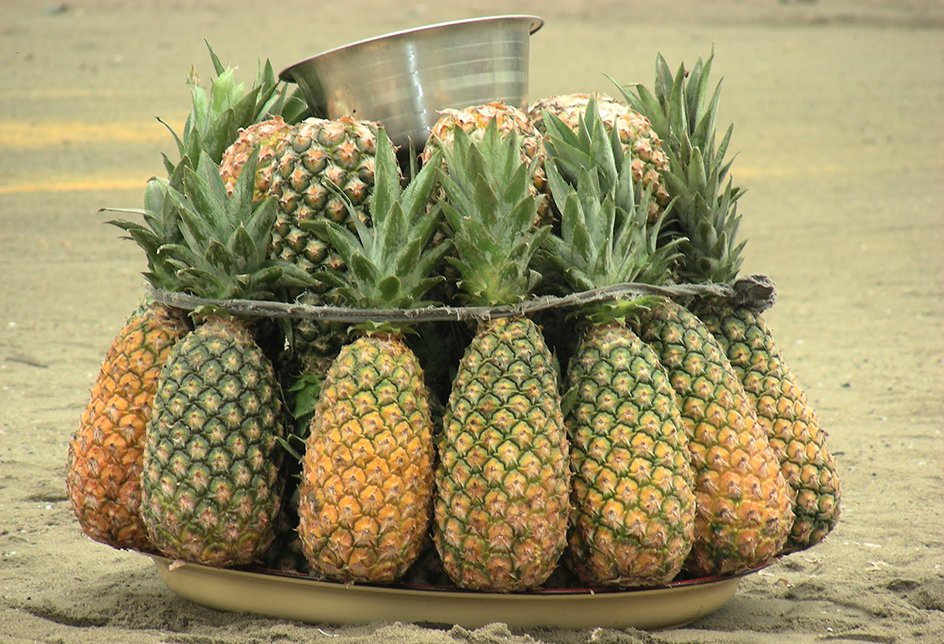A Tropical Treat on a Budget: Exploring Pineapple Prices at Wigmore Trading
A Tropical Treat on a Budget: Exploring Pineapple Prices at Wigmore Trading
Are you a pineapple lover on a budget? Look no further! We’ve got an exciting adventure in store for you. Join us as we dive into the world of tropical treats and explore the unbeatable prices of pineapples at Wigmore Trading. Get ready to tantalize your taste buds, save some cash, and discover why this hidden gem is the go-to destination for all pineapple enthusiasts. Trust us, this blog post will leave you wanting to pack your bags and head straight to paradise!
What is Wigmore Trading?
Wigmore Trading is a small, family-owned and operated fruit and vegetable store in the heart of historic Charleston, South Carolina. They offer an extensive selection of tropical fruits and vegetables at affordable prices, including pineapple.
Pineapple prices at Wigmore Trading can vary significantly based on the season and availability. In summer months, when the fruit is in season and available in greater quantities, pineapple prices can be quite high. However, during winter months when pineapple is not in season and availability is limited, prices can be much lower.
Pineapples at Wigmore Trading are generally affordable with a wide range of price points depending on the time of year. This makes it a great option for budget-minded shoppers looking for some delicious tropical flavor without breaking the bank.
The History of Pineapple Prices
The history of pineapple prices can be traced back to the early 1800s when the fruit was first cultivated in the Caribbean. Prices for pineapples fluctuated wildly during the 1800s due to a variety of factors including transportation and crop failures. In 1887, pineapple prices reached an all-time high of $1.25 per pound. However, prices soon crashed due to overproduction and a worldwide depression. By 1929, pineapple prices had plummeted to around 50 cents per pound.
Pineapple prices recovered during World War II as a result of increased demand from the military. However, prices again crashed in the late 1940s due to oversupply and lack of demand. The price of a kilogram (2.2 pounds) of fresh pineapple peaked at $1.68 in 1973 but has since declined to just under $0.80 per kg today [Source: Pineapple Exchange].
Despite fluctuations in price, pineapple continues to be one of the most popular tropical fruits in the world [Source: Wikipedia]. In fact, production has been increasing every year since 2007 [Source: Pineapple Exchange]. This suggests that pineapples will continue to be a popular budget option for consumers looking for a tropical treat on a budget.
Finding Pineapple Prices at Wigmore Trading
When looking for pineapple prices at Wigmore Trading, it’s important to keep in mind the different types and grades of pineapples available. The most common type of pineapple is the Hawaiian-type, which is a sweeter fruit that typically costs less than other types. However, if you’re looking for a more sour fruit, you may want to consider a Mexican-type pineapple. Regardless of the type, all pineapples are priced based on their size and weight.
How Much Do Pineapples Cost?
Pineapple prices vary greatly depending on where they are grown and processed, but on average, a typical pineapple will cost around $1.50-$2 per pound.
The Different Types of Pineapple
There are several types of pineapples, but the most common is the Hawaiian type. There are also two types of Chinese pineapples, and a few other varieties. The following is a list of the different types of pineapples:
Hawaiian: The Hawaiian type is the most common variety and is often found in containers at grocery stores. It has a sweet taste and can be eaten raw or cooked.
Chinese: The Chinese type is similar to the Hawaiian type but has a firmer texture. It is used more in cooking than eating raw.
Strawberry: The strawberry type is smaller than other types and has a sweet, fruity taste. It can be eaten raw or cooked, but tends to be less popular than other types.
Pink Lady: The pink lady type is the largest and juiciest of all the pineapples. It has a slightly tart flavor and can be eaten raw or cooked.
What to Do with Leftover Pineapple
If you’re lucky enough to have some leftover pineapple from your last trip to the grocery store, don’t waste it! Here are six creative ways to use up that fruit:
1. Make Pineapple Upside-Down Cake. Preheat the oven to 350 degrees Fahrenheit and grease a 9×13 inch baking dish. Sift together 1 cup of all-purpose flour, 2 teaspoons baking powder, and 1/2 teaspoon salt. In a large bowl, mix together 2 cups of sugar, 3 eggs, and 3 tablespoons butter until light and fluffy. Add 3/4 cup milk and 2 cups of chopped pineapple (cored and cut into small pieces). Stir until well combined. Pour the batter into the prepared baking dish. Bake for 50 minutes or until a toothpick inserted into the center comes out clean. Allow the cake to cool completely before inverting it onto a serving plate.
2. Make Pineapple Banana Bread . Preheat the oven to 350 degrees Fahrenheit and line a loaf pan with parchment paper. Sift together 1 cup of all-purpose flour, 1 teaspoon baking soda, and 1/2 teaspoon salt in a medium bowl. In a separate bowl, mash 2 ripe bananas (with some juice) until smooth. Add 3/4 cup sugar, 1 egg, and 1/3 cup oil to the mashed bananas and mix well. Pour the mixture into the prepared loaf pan and bake for 35 minutes or until a toothpick inserted into the center comes out






Comments are closed.